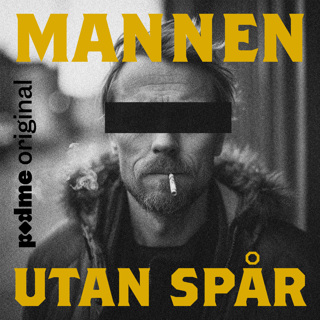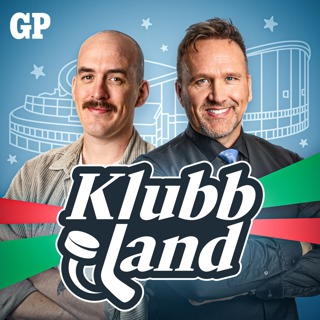
Fashion's New Normal: Resilience, Sustainability, and Strategic Collaborations
The global fashion industry has seen notable developments over the past 48 hours, underscoring both ongoing challenges and emerging opportunities. Leading brands have announced major product launches and strategic partnerships, while economic pressures and evolving consumer preferences continue to shape the market landscape.Christian Louboutin has stepped into the eyewear segment for the first time, unveiling a collection inspired by the brand’s famous footwear aesthetics and pricing new sunglasses up to $875. This move aligns with other luxury brands diversifying their portfolios and seeking growth in adjacent categories. Similarly, Louis Vuitton launched the Sneakerina, a hybrid between sneakers and ballet flats, reflecting a wider industry focus on versatility and everyday luxury. Ralph Lauren further expanded its retail footprint with a new boutique, enhancing its presence in Australia and underscoring a push toward international markets[2][5].Sustainability and innovation remain central themes. This week, The LYCRA Company showcased a bio-derived fiber at Kingpins Amsterdam, while Unifi’s REPREVE introduced a new biodegradable textile, demonstrating a surge in eco-friendly material launches. These developments respond directly to consumer demand: 44 percent of millennials and Gen Z now consider environmental impact a primary factor in purchasing decisions[4][8]. Major trade fairs like the Functional Fabric Fair in Portland have focused on sustainable textile sourcing and supply chain innovation, signaling industry commitments to greener practices[1].Collaborations stand out as a critical driver of both sales and social buzz. The BMW x Louis Vuitton partnership achieved a resale value surge of 787 percent, reflecting consumer appetite for exclusive limited editions. On the other hand, not all collaborations perform equally, as seen with the Skims x The North Face collection experiencing a 35 percent decline in resale value[7].Economically, the industry is navigating a period of sluggish growth. McKinsey forecasts low single-digit revenue increases for 2025, with non-luxury segments expected to drive profit for the first time in over a decade. Consumer sentiment remains cautious due to persistent inflation and macroeconomic uncertainty, forcing brands to focus on efficiency, nearshoring, and supply chain resilience[6]. In summary, today’s fashion industry is characterized by innovation in products and materials, aggressive pursuit of strategic partnerships, and a pragmatic response to shifting consumer and macroeconomic realities. Compared to last year’s cautious optimism, the new normal is one of resilience and adaptability, as brands pivot to meet both sustainability expectations and economic headwinds[6][8].This content was created in partnership and with the help of Artificial Intelligence AI
16 Apr 3min

Fashion's Evolving Landscape: Prada's Versace Acquisition, Sustainability Shifts, and Changing Consumer Trends
The fashion industry is currently navigating a complex landscape shaped by collaborations, sustainability efforts, consumer demands, and shifting economic conditions.In a striking development, Prada has acquired Versace for €1.25 billion, a move celebrated as a consolidation of Italian luxury and a counterbalance to the dominance of French conglomerates like LVMH and Kering. This acquisition reflects a strategic shift among fashion leaders toward preserving cultural heritage while scaling operations to stay competitive in a global market. Meanwhile, brands such as Lululemon have reported robust sales, driven by strong consumer appetite for athleisure, prompting share price increases of about 5 percent last week.Sustainability remains a key focus, with brands like URBN joining the US Cotton Trust Protocol to bolster responsible sourcing. However, challenges persist, as seen in Sweden, where textile waste has soared following the EU’s ban on discarding garments. This underscores the pressure on fast fashion brands to adopt circular practices. Rising consumer awareness about ethical sourcing and environmental impact has contributed to fast fashion struggling to maintain relevance; the UK-based Select Fashion declared insolvency and plans to close 35 stores due to financial losses.The industry is also capitalizing on the power of collaborations. The Louis Vuitton and Takashi Murakami re-edition, Balenciaga's partnership with Under Armour, and the Nike x SKIMS collection are examples of creative synergies boosting brand visibility and consumer excitement. The Louis Vuitton-Murakami revival, for instance, has attracted younger luxury consumers with its blend of nostalgia and modernity.Consumer behavior continues to shift towards personalization, inclusivity, and digital integration. Advanced AI tools and virtual fitting rooms are transforming e-commerce, delivering tailored shopping experiences that mirror in-store engagement. Stitch Fix is a prime example, using algorithms to curate personalized wardrobe suggestions, aligning with the broader trend of digitized retail.Economically, the fashion sector faces subdued growth. McKinsey predicts low single-digit revenue increases for 2025 amid inflation and cautious consumer spending. Brands are responding through pricing strategies and profitability-focused supply chain improvements.In sum, the fashion industry is undergoing notable shifts propelled by sustainability concerns, innovative partnerships, and evolving consumer expectations, while grappling with economic challenges. Industry leaders like Prada are making bold moves, while fast fashion companies face mounting pressures to adapt or risk decline.This content was created in partnership and with the help of Artificial Intelligence AI
14 Apr 2min

Fashion's Resilience Amid Economic Shifts and Evolving Preferences
The fashion industry is currently navigating a landscape defined by economic challenges, shifts in consumer preferences, and creative innovations. Over the past 48 hours, several significant developments have highlighted both opportunities and pressures facing the sector.Rising inflation and newly announced tariffs in the U.S., including a 10% blanket tariff and additional levies on goods from China and the EU, are expected to increase production costs and retail prices. These measures particularly threaten small and independent fashion businesses reliant on global supply chains. The Council of Fashion Designers of America expressed concern, emphasizing potential disruptions to sourcing and diminished competitiveness. Many brands, already experimenting with supply chain diversification to countries like Vietnam and Bangladesh, now face further setbacks as they navigate these challenges. Analysts believe the rising costs will affect apparel prices across all income brackets, from fast fashion to luxury goods, making affordability a key concern for consumers and retailers alike.Meanwhile, consumer behavior continues to lean towards sustainability, personalization, and transparency. A surge in the second-hand fashion market reflects this trend, with young shoppers driving demand for resale platforms such as Temperley London’s new “Temperley Vintage.” Similarly, Amsterdam and Copenhagen Fashion Weeks have partnered to accelerate sustainable initiatives. Brands like Stitch Fix see success by blending AI-powered personalization with a commitment to more sustainable practices, evidenced by a 20% increase in fashion sales through their "buy now, pay later" partnerships.In terms of new product launches, Reebok unveiled its second collaboration with White Mountaineering, featuring a reimagined Classic Leather design that blends outdoor functionality with urban fashion. This follows ongoing brand partnerships like Louis Vuitton’s collaboration with Takashi Murakami and Balenciaga’s fusion with Under Armour, showcasing a trend of creative synergies between heritage and innovation.Economic pressures, particularly within fast fashion, remain concerning. Retailers like Forever 21 and Select Fashion continue to close stores amidst declining consumer interest in unsustainable practices and increased preference for e-commerce. Conversely, luxury and performance brands are leveraging storytelling and technological innovations to capture consumer loyalty.Compared to previous trends, the industry’s focus remains on resilience and evolution. Navigating these challenges will require strategic investments in sustainability, adaptive pricing, and enhanced consumer experiences. Major players who successfully integrate these components could lead the market during this transformative period.This content was created in partnership and with the help of Artificial Intelligence AI
11 Apr 3min

Fashion Industry Adapts to Strategic Partnerships, Regulatory Changes, and Market Disruptions
Over the past forty-eight hours, the fashion industry has seen a mix of strategic partnerships, regulatory changes, and market disruptions. Recent collaborations include Reebok's partnership with White Mountaineering, featuring a new Classic Leather collection set to launch on April eleven, twenty-twenty-five. This collaboration blends outdoor functionality with Reebok's iconic silhouettes, reflecting a broader trend of merging different aesthetics to cater to diverse consumer tastes.In terms of market movements, the recent announcement of tariffs by President Trump has caused concern among fashion executives, as these tariffs are expected to increase costs and challenge global supply chains. Stocks plummeted immediately after the announcement, with brands like Pedro Garcia expressing concerns about the twenty percent tariffs on goods from the EU.Consumer behavior continues to emphasize sustainability and ethical production practices, with brands investing heavily in eco-friendly initiatives. Fashion leaders are also embracing digital transformations, with e-commerce growth being a significant focus in twenty-twenty-five. Brands like ASOS and Zara are leveraging AI-powered virtual fitting rooms to enhance online shopping experiences.Compared to previous periods, the industry faces more stringent regulatory challenges and consumer expectations. Despite these challenges, fashion brands are adapting by forming strategic partnerships and focusing on sustainable production methods. Overall, the fashion industry remains dynamic, with ongoing developments likely to shape its future trajectory.This content was created in partnership and with the help of Artificial Intelligence AI
10 Apr 1min

Fashion's Transformative Shifts: Collaborations, Sustainability, and Evolving Consumer Trends
The fashion industry has experienced notable shifts over the past 48 hours, marked by fresh collaborations, market movements, and evolving consumer dynamics. Global market challenges, including economic uncertainty and changing consumer preferences, persist, while industry leaders adapt with innovation and strategic moves.One major announcement comes from Kate Spade, which has partnered with Target to release a collaborative collection on April 12. This extensive line features over 300 items, from women’s and children’s apparel to home accessories and novelty items, with prices ranging from $5 to $300. Intended to blend Kate Spade’s whimsical style with Target’s accessible design ethos, this partnership is part of parent company Tapestry’s strategy to revive declining revenues, showcasing bright, playful designs aimed at reconnecting with consumers[10].In other news, the collaboration between Reebok and Tokyo-based White Mountaineering is set to launch on April 11. The collection reimagines Reebok’s Classic Leather silhouette in outdoor-inspired designs, combining fashion functionality with premium craftsmanship. This marks the second collaboration between the two brands and reflects an ongoing trend of blending performance with urban aesthetics[6].Creative leadership changes continue to reshape the luxury sector. Gucci has appointed Demna as artistic director, and Versace is entering a new era under Dario Vitale after Donatella Versace’s exit following decades of leadership. These transitions signal shifts in brand identities and approaches to creativity in a competitive luxury market[1].Amid these developments, sustainability and technology remain critical. Consumer demand for eco-conscious practices is driving brands to incorporate circular fashion models. Younger shoppers, particularly Millennials and Gen Z, prefer durable, sustainable options, with 44% considering environmental impact when purchasing. Meanwhile, AI tools are integrating into design and supply chain processes, with an estimated $275 billion in profits projected for the fashion industry by 2026 due to technologies like predictive analytics and automated design processes[3][7].While brands innovate to meet these demands, economic pressures like inflation and cautious consumer spending reshuffle priorities. Declines in discretionary spending and rising demand for affordable alternatives have CEOs anchoring strategies on cost-efficiency and regional diversifications, particularly in Asia. Notably, non-luxury segments are emerging as growth leaders, counteracting a historical reliance on luxury markets[8].In conclusion, the fashion industry, despite economic challenges, is fostering innovation, sustainability, and collaboration to navigate these turbulent times. Leaders remain focused on capturing market share while engaging consumers through accessible, thoughtful, and tech-driven offerings.This content was created in partnership and with the help of Artificial Intelligence AI
9 Apr 3min

Fashion's Resilience in Turbulent Times: Navigating Tariffs, Collaborations, and Sustainability
The fashion industry is navigating a complex and turbulent landscape as of April 2025. Recent developments highlight resilience, innovation, and significant challenges, underscoring shifts in consumer behavior, market adjustments, and geopolitical factors.A major disruptor this week is the implementation of sweeping tariffs by the United States, including 10 to 34 percent levies on goods from countries like China and the EU. These measures have created immediate concerns about rising prices across the sector. Brands reliant on international supply chains are bracing for higher costs, especially smaller labels. For instance, independent designers fear reduced competitiveness, while the Council of Fashion Designers of America emphasized the potential economic strain on American fashion[6].Despite these headwinds, the industry continues to embrace collaboration and innovation. Notable partnerships include Louis Vuitton reuniting with artist Takashi Murakami, blending nostalgic designs with modern craftsmanship, and Balenciaga partnering with Under Armour to merge fashion with performance wear. These collaborations reflect broader trends of fusing art, utility, and luxury[3]. Additionally, brands like Reebok and White Mountaineering are focusing on premium designs, launching a revamped Classic Leather collection on April 11[8].The rise of sustainability as a consumer priority marks a significant shift, with younger generations driving demand for circular fashion and eco-friendly practices. Notable examples include Temperley London's launch of a resale platform, catering to the growing secondhand market[1][4]. Simultaneously, technological advancements such as AI design tools and augmented reality fitting rooms are redefining shopping experiences, with brands like Zara enhancing personalization for customers[4][9].Economic challenges persist. McKinsey projects sluggish revenue growth in 2025, limited to low single digits. This slowdown is compounded by inflation and price sensitivity among consumers, though there are regional bright spots, such as Europe benefiting from rebounding tourism[2]. Fast fashion is also growing rapidly, with the market projected to reach $163.21 billion in 2025, driven by affordable trends and social media integration[7].In response, leaders are prioritizing agile supply chains to counter disruptions. Efforts to localize manufacturing and reduce excess inventory are gaining traction, while some brands are targeting older demographics, signaling a pivot from their traditional focus on younger shoppers[2][6].In summary, while the fashion industry faces economic uncertainties, it is leveraging creativity, sustainability, and technology to adapt. However, the coming months will test whether these strategies can offset mounting financial pressures and regulatory disruptions.This content was created in partnership and with the help of Artificial Intelligence AI
8 Apr 3min

Fashion's Evolving Landscape: Navigating Tariffs, Sustainability, and Collaboration
In the past 48 hours, several critical developments have reshaped the global fashion industry, reflecting both opportunities and challenges. The recent imposition of US tariffs by the Trump administration on imported goods, with rates as high as 34 percent for Chinese products and 20 percent for European items, has sent ripples across the sector. This move is expected to increase costs for manufacturers and consumers alike, with the Council of Fashion Designers of America raising concerns over its potential to undermine global supply chains and burden independent designers. Major brands, already diversifying production to countries like Vietnam and India, now face further complexities in ensuring stable sourcing and pricing strategies.Simultaneously, sustainability and second-hand fashion continue to gain momentum. A Statista survey revealed significant growth in the UK’s second-hand market, driven by younger, environmentally conscious consumers. British brand Temperley London embraced this trend with its new resale platform, Temperley Vintage, while Marks & Spencer expanded its offerings by adding Calvin Klein and Tommy Hilfiger to its lineup. Sustainability partnerships also took center stage as Amsterdam and Copenhagen Fashion Weeks aligned to promote eco-friendly practices in the Benelux and Nordic regions.Collaboration remains a dominant strategy in 2025, with brands leveraging creative synergies to capture consumer attention. For instance, Louis Vuitton revived its partnership with artist Takashi Murakami, merging nostalgia with modernity, while Balenciaga joined forces with Under Armour to blend luxury with performance-focused apparel. Meanwhile, Away That Day launched a bridal swimwear line in partnership with Gigi & Olive, showcasing innovation in niche segments. These alliances highlight how fashion houses are adapting to shifting consumer preferences for personalization and exclusivity.On the market front, Lululemon raised its annual forecast after reporting robust demand in the US. Conversely, Puig faced a setback as shares dropped following a product withdrawal from Charlotte Tilbury. These developments illustrate both the resilience of premium activewear and the vulnerability of luxury beauty amid operational disruptions.In comparison to previous years, the fashion industry’s current challenges—from geopolitical tensions to economic uncertainty—are more pronounced. Leaders are focusing on price adjustments and supply chain resilience to navigate the turbulent landscape. As consumer expectations evolve toward sustainability, transparency, and personalized experiences, brands are under pressure to innovate while managing rising costs and global uncertainties.This content was created in partnership and with the help of Artificial Intelligence AI
7 Apr 2min

Fashion's Evolving Landscape: Navigating Supply Chains, Regulations, and Shifting Consumer Demands
The global fashion industry has faced a turbulent 48 hours, influenced by significant market, regulatory, and consumer behavior trends. Current conditions reflect ongoing challenges in supply chains, consumer preferences, and geopolitical shifts.Tariffs implemented during Donald Trump’s second presidential term remain a critical concern. New tariffs on China-made goods are raising sourcing costs and exerting inflationary pressure on the industry. While some brands like Steve Madden have cut imports from China by up to 45%, others are increasingly nearshoring operations in Asia and the Western Hemisphere to reduce dependence on China. U.S. apparel imports from China have already declined by six percentage points compared to 2019, with investments in nearshoring doubling over the past five years[1][2].Regulatory changes have intensified as the UK implemented stricter compliance rules under the Digital Markets, Competition and Consumers Act. These new measures focus on fashion’s environmental claims and require stringent adherence to transparency standards, posing additional compliance challenges for brands[6]. Consumer behavior is also shifting notably. Sustainability, inclusivity, and personalization are now expected rather than optional. Circular fashion models, resale platforms, and eco-friendly initiatives are reshaping the market to meet these demands. Despite this, shoppers are becoming increasingly price-sensitive due to sustained inflation. For instance, resale items from collaborations such as BMW x Louis Vuitton have surged by 787.5% in value, while others like Skims x The North Face have seen sharp declines, illustrating uneven demand for high-profile partnerships[3][4].The ecommerce boom continues evolving with technological innovations. Retailers like Zara are investing in AI-driven virtual fitting rooms to create immersive and tailored shopping experiences. Digital retail, now a primary platform for consumers, is reshaping the traditional in-store model[9].The industry’s leaders are grappling with these dynamics. To contend with pressures, many are focusing on supply chain agility and sustainability as a competitive advantage. However, non-luxury segments, rather than high-end sectors, are expected to drive revenue growth in 2025 for the first time since 2010, indicating a broader shift in consumer spending power[2].In summary, the fashion industry is at a crossroads, balancing economic, regulatory, and consumer pressures. While challenges persist, innovation and adaptability remain critical as brands navigate these complexities.This content was created in partnership and with the help of Artificial Intelligence AI
4 Apr 2min





















